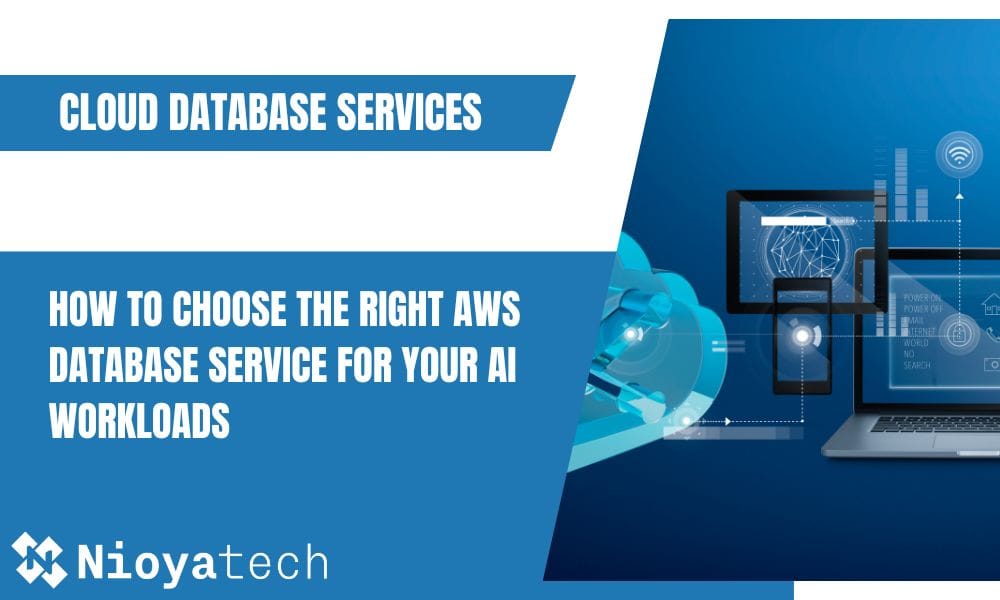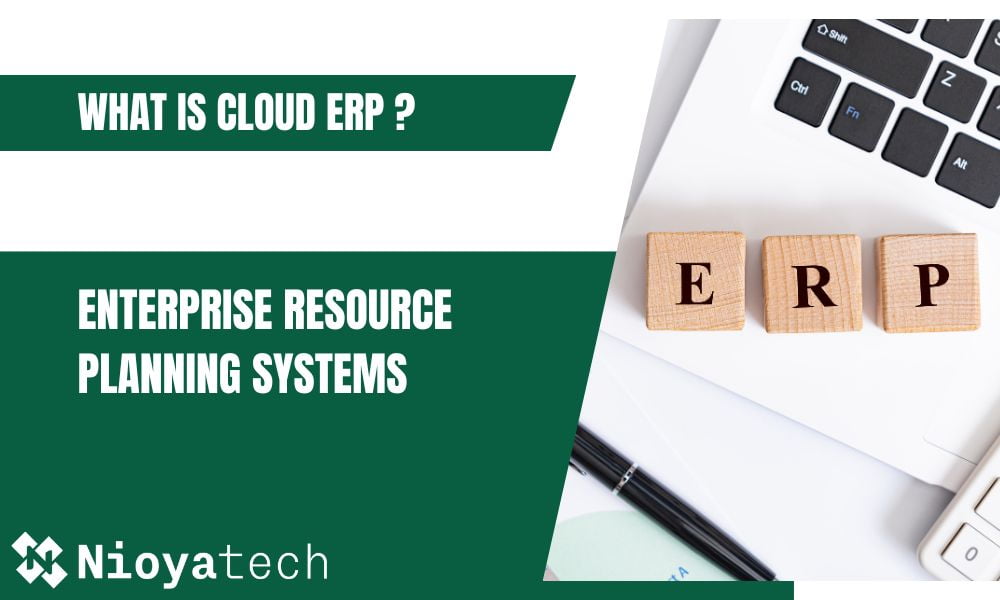New technologies have emerged in a revolutionary manner over the past several years. As a result, big data and cloud computing terms are increasingly used in both personal and professional settings. Cloud computing services enable customers to access their programs from any device using their login credentials without storing data on their physical hard drives.
To protect data and applications in the cloud from current and upcoming cybersecurity threats, you need cloud security. Cloud security is a cybersecurity discipline that aims to protect systems running in the cloud. Cloud security encompasses a set of policies and technologies to protect data and infrastructure on the cloud. These security measures protect a cloud computing environment against external and internal cybersecurity threats and vulnerabilities.
On their servers, cloud providers host services via continuously active internet connections. Since their business relies on the confidence of their users, cloud security techniques are utilized to keep customer data private and secure. However, the consumer has some control over cloud security. Therefore, a healthy cloud security solution depends on understanding all sides of this idea. In this blog content, we’ll talk about the cybersecurity threats associated with cloud computing from both sides.
What are the Security Risks of Cloud Computing?
In many ways, the security issues in cloud computing and on-premises are similar. Security breaches in both situations concentrate on utilizing and exploiting software flaws. Let’s check some common security risks associated with cloud computing:
Data Breach
Hackers gain access to an organization’s data through a data breach, which is the process by which private information is viewed, accessed, or taken by a third party without authorization.
By giving the Cloud Service Provider some control, brands also expose their customers’ data more. For instance, the likelihood that sensitive information from your company would end up in the wrong hands increases significantly if there is a data breach in the area of the cloud computing provider.
Data Loss
The most frequent cloud security risk associated with cloud computing is data loss. It is sometimes referred to as a data leak. Data loss is having data destroyed, damaged, or rendered unusable by a user, program, or application. We call it data loss in a cloud computing environment when our sensitive data is in the hands of a third party, the data owner cannot use one or more data pieces, the hard drive is not functioning properly, and the software is not updated.
Compliance Violations
Cloud computing is expanding at a rapid pace. While technology has accelerated the transition from offline systems for enterprises, it has also forced essential discussions about compliance. Therefore, you must ensure that the cloud computing provider matches the necessary privacy and security guidelines.
Organizations must exercise caution to ensure that they continue to adhere to the regulatory standards unique to their sector and geographic area. For example, when using cloud-based services for your data, you must make sure that the service provider complies with HIPAA security and privacy requirements, GDPR, or other matters unique to your company when it comes to data access and storage requirements for Personally Identifiable Information (PII).
Additionally, as cloud services frequently permit greater data access, businesses must ensure that the right access controls and security precautions are in place. Organizations will benefit from connected compliance management software’s assistance in meeting regulatory compliance requirements.
Denial of Service (DoS) attacks
By temporarily or permanently interrupting the services of a host connected to a network, the perpetrator of a denial-of-service attack aims to render a machine or network resource unavailable to its intended users. Web servers of significant organizations, including those in the banking industry, the media industry, and governmental institutions, are the focus of DoS attacks.
Cybercriminals utilize denial of service (DoS) attacks to prevent authorized users from accessing servers and, as a result, services. Additionally, DoS assaults are occasionally used to threaten or overwhelm internet firewalls or to divert attention from other, concurrent activities.
Insecure Integration and APIs
Since cloud computing is entirely dependent on the Internet, it is imperative to protect the interfaces and APIs that outside users utilize. Therefore, you can reach cloud services easily through APIs.
Data synchronization, automated data workflows between cloud systems, and general customization of the cloud service experience are all made possible through Application Programming Interfaces (APIs), which both individuals and corporations use.
Cross-system vulnerabilities can result from APIs that do not properly enforce access control, encrypt data, or sanitize its inputs. Conversely, weaknesses are reduced when using industry-standard APIs with appropriate authentication and permission mechanisms.
Misconfiguration
Any flaws, holes, or faults in the cloud that could put your environment in danger when you use the cloud are referred to as cloud misconfiguration. These cyberthreats take the shape of network intrusions, external hackers, malware, security breaches, and security breaches.
Cloud-native breaches frequently result from a cloud customer’s failure to meet security obligations, which includes the cloud service’s configuration. A subset of cloud computing known as Infrastructure as a Service (IaaS) offers virtualized computer resources online. IaaS involves the service provider being in charge of managing the underlying hardware, which includes servers, storage, and networking components.
IaaS misconfiguration frequently serves as the entrance to a Cloud-native breach, enabling the attacker to land successfully before continuing to spread and exfiltrate data.
How to Evaluate Cloud Service Provider Security?
The strategy has been to embrace a cloud-first approach and use cloud service providers for the majority of their systems for many new firms and start-ups. Their adoption of IT was made simpler by this strategy.
Cloud computing allows businesses to move all or part of their IT operations to an outside, a third-party company with expertise in that area. These parties are more commonly referred to as cloud service providers. Google Cloud Platform, Amazon Web Services (AWS), and Microsoft Azure are a few examples of cloud security providers. To guarantee the proper security safeguards are in place, cloud service providers might commit time, resources, and staff. Naturally, this aids in safeguarding client data from online dangers and risks.
Compliance
Most firms have security, privacy, and compliance policies and processes to safeguard their intellectual property and assets. Organizations should also set up a formal governance architecture that specifies the chains of command, authority, and communication. This explains the participants’ duties and responsibilities, their interactions and communications, as well as the general guidelines and policies.
In order to protect your company’s information assets, you must assess both your cloud service provider and the way your company intends to use the provider’s services. Before signing a contract with a cloud service provider, it is crucial that your business be aware of the regulatory compliance standards that must be met.
Look for common standards like ISO-27001, ISO-27002, and ISO-27017, which show that the supplier adheres to security best practices and makes an effort to lower risks. There are also government and regulatory protocols to consider, including the EU’s General Data Protection Regulation (GDPR), the California Consumer Protection Act (CCPA), the Health Insurance Portability and Accountability Act (HIPAA), and the Payment Card Industry Data Security Standard (PCI DSS), among others.
Identity and Access Management – IAM
Identity Access Management (IAM) is responsible for ensuring whole cloud security for companies using policies and numerous verification stages inside a particular network.
To fulfill the separation of responsibilities criteria of auditors and regulators, you should employ fine-grained permissions to limit the capabilities of a given individual. Standardized IAM roles may also significantly simplify cloud security, and their adoption ought to be required.
One of the greatest ways to protect against faulty or stolen credentials is multi-factor authentication, which places no additional load on users. Multi-factor authentication employs more than one security element for authentication, as the name suggests. It doesn’t really help to use two of the same factor, like two distinct passwords. Two-factor authentication (2FA), which requires both something you have and something you know (like a password), is the most popular approach (like your mobile phone).
Off-Boarding Procedure
What occurs if one of your workers decides to leave the company? Do you simply wave them off and call it a day? If so, you are jeopardizing the security of your company.
Make sure former employees can no longer access your storage system or any other intellectual properties after they leave your organization. Any access privileges to data systems, including those to cloud platforms, must be revoked. Your former workers may simply sell your data to the incorrect parties and not even be held responsible.
So make sure your off-boarding procedure is thorough and stops former employees from using the cloud. You can employ experts if you don’t know how to do it.
Anti-Phishing Awareness
The biggest risk to your cloud security may not come from your staff. One of the simplest methods for hackers to get your data is phishing, and you won’t even be aware of it. Because of this, it’s crucial to provide your personnel with thorough anti-phishing training routinely. Then, your staff will be able to recognize phishing schemes and avoid them as a result.
For maximum impact, anti-phishing training should be ongoing. A series of regular and ongoing training sessions are required for proper training rather than a single session. Every day, dishonest hackers create new phishing schemes.
Data Protection
For any firm, the most important aspect of IT security is data. It is not alleviated by cloud computing; rather, new difficulties are created. Both when the data is at rest and transmitted, security and protection must be guaranteed. In the next chapter, we will discuss this.
How to Secure Cloud Data?
As more businesses move their data to the cloud, new problems with data liability start to appear. Businesses that store sensitive data in the cloud or hybrid cloud systems must be on the lookout for threats to the data’s security.
Keeping your data secure is the main goal of cloud security. However, recognize that the responsibility for cloud security challenges lies not only with you but also with the cloud service provider (CSP); in essence, you and the CSP must work together to ensure cloud security. Therefore, the first thing to consider is how prepared your CSP is to protect the data and business apps you use.
Now let’s check some of the best practices for data protection on cloud:
Use Multiple Regions or Zones
In order to protect your database from losses like these, it is a better idea to disperse your data across many availability zones. Ensure that the backup database is replicated in a different availability zone while configuring a database system while taking DR (Disaster Recovery) and HA (High Availability) into account. This way, your application can transition to the secondary standby setup from another AZ in the event that your primary instance is unavailable due to a fault or disaster.
Create Credential Policies
Strong credential policies and stringent access restrictions should both be put in place. Users and programs can only access the data they require, thanks to strict permissions. In order to prevent attackers from abusing the permissions provided to such users and applications, strong credential restrictions are in place.
Audit your permissions and password lifecycles on a regular basis. Verify that every credential on your system is actually being utilized. Additionally, you want to make sure that users aren’t repeating passwords and that passwords are sufficiently challenging to guess.
Isolate Your database
Sophisticated security procedures must be implemented to protect databases from hackers. Your data is also exposed to several attack vectors that target your website if it is stored on the same server. To lessen these security threats, you should isolate your database servers from everything else.
Disaster Recovery
A cloud computing service called cloud disaster recovery enables the storage and recovery of system data on a distant cloud-based platform. Disaster recovery’s main objective is to lessen a disaster’s overall impact on corporate performance.
To restore business operations in the event of a disaster, important workloads can be failed over to a disaster recovery site. You can fail back from the cloud and restore your infrastructure and its parts to their initial states as soon as your production data center is operational again. As a result, service disruption and business downtime are minimized.
Secure Cloud
As organizations move more of their data centers and business operations to the cloud, data security becomes more and more crucial. Cloud security solutions, thorough security policies, and a security-conscious organizational culture all contribute to high-quality cloud data security.
To get the most out of the cloud and make sure your company is safe from threats like unauthorized access, data breaches, and other dangers, Nioyatech implements cloud security best practices for your company.
Nioyatech’s dedicated team of experts ensures that your cloud infrastructure is fortified with robust security measures. We employ multi-factor authentication, encryption protocols, and continuous monitoring to safeguard your data and applications. Visit Nioyatech’s Cloud Consulting Services page to get more to leverage the full benefits of the cloud with confidence and peace of mind.






